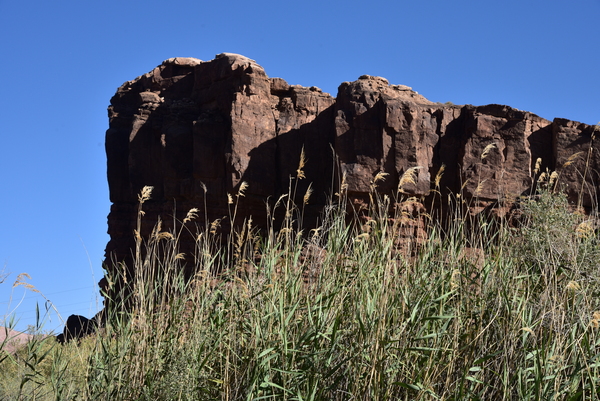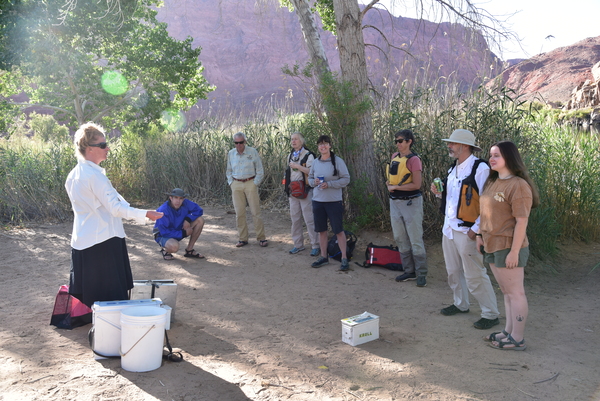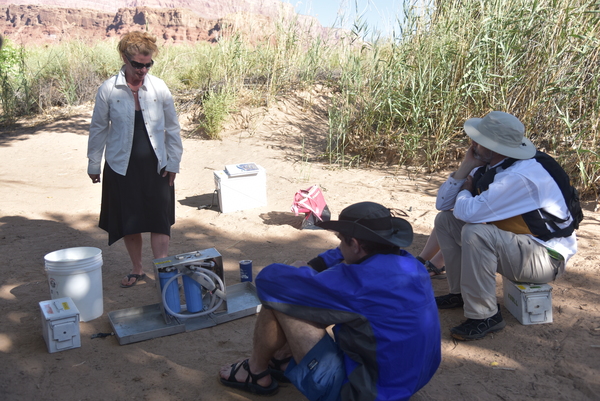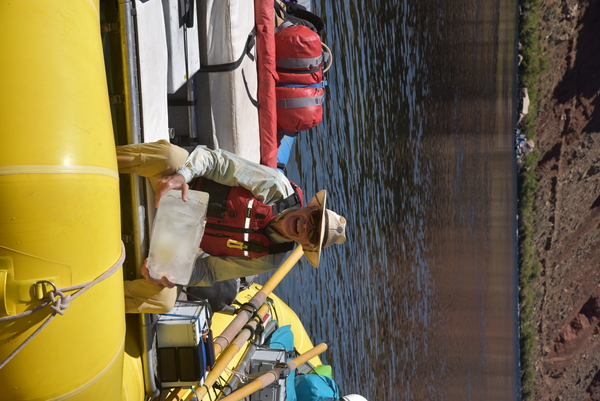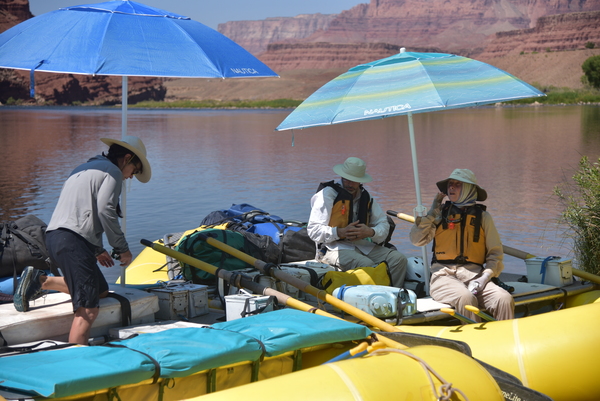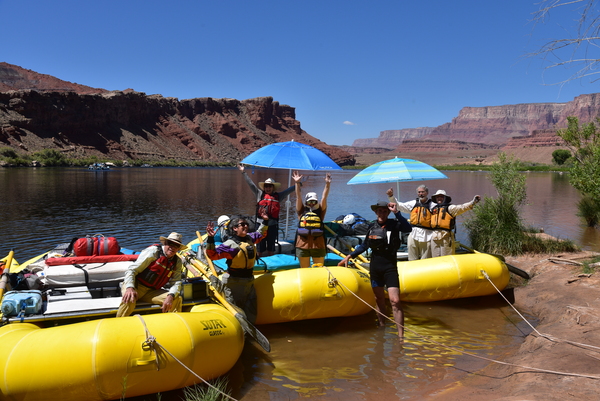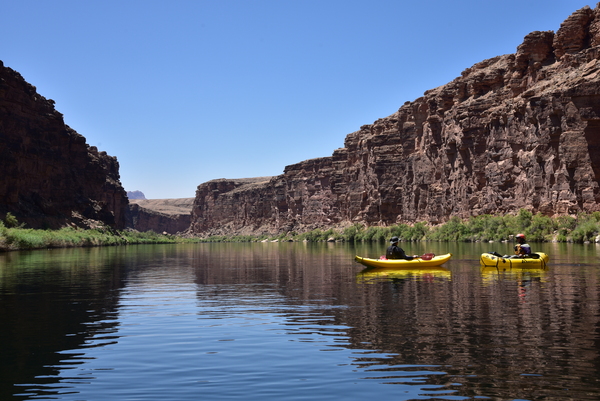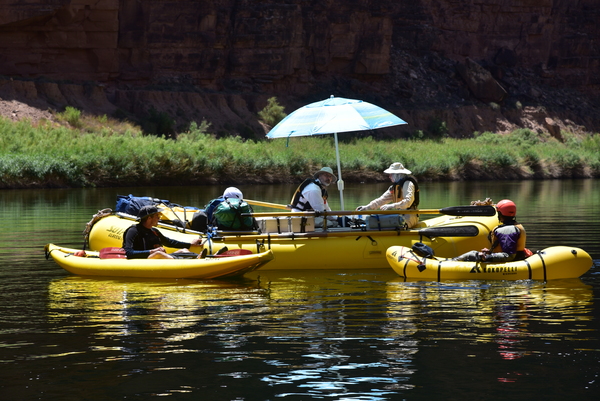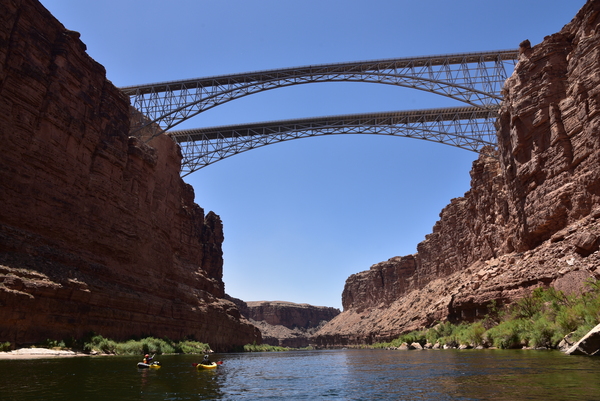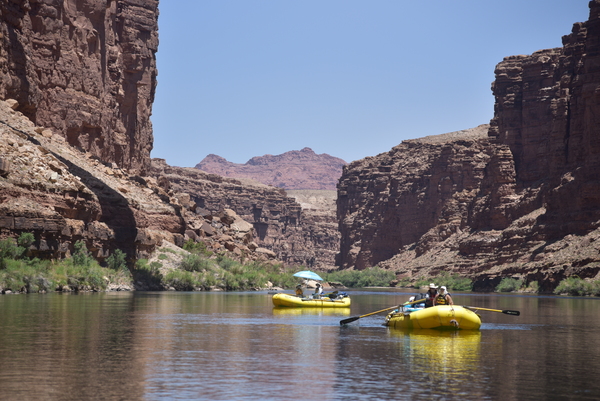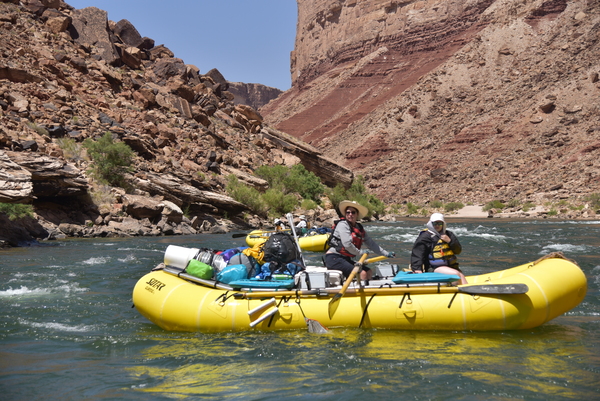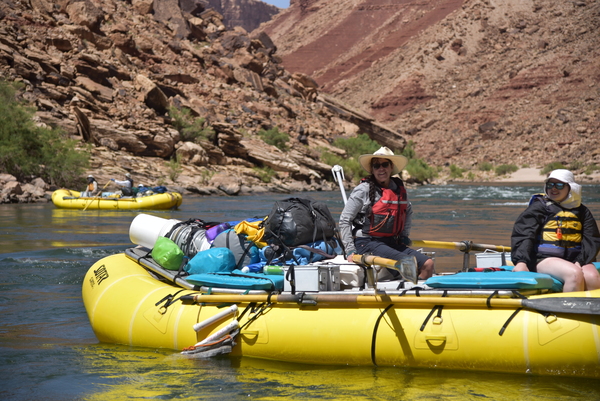Canyon Day One
The first morning light before sunrise lifted all of us out of our slumber. At 6:30am we had enjoyed coffee and breakfast. Beth from PRO arrived to brief us on the use of the groover, kitchen hygiene and the water filter. Everything. Everything must pack-out of the canyon. Imagine. One or two thousand people use every camp along the river every year– some popular camps more than others. Leaving anything would leave a mess with no services to remove it. It is up to us to leave camps cleaner than we find them. We even put a tarp down in the food preparation area so that we don’t leave crumbs in the sand that will attract ants.
The “groover” is the river name for the toilet. We poop into a can. Fortunately the groover cans seal well. We keep them on a boat separate from the food. They don’t smell on the boat.
The only trouble this camper had with the groover was separation constipation. After peeing separately into a bucket the rest remained retained, shut off, inhibited. I went over a day sometimes getting the process to work-out separately. Mornings came with discomfort and the question: will it be today? It was a small price to pay.
The water filter is a battery operated pump mounted in an aluminum frame together with household sediment and carbon filters. Water is life in the canyon. We depended on the filter. When the Colorado River became muddy, as is the norm, we settled the water overnight in buckets to clear the sediment before pumping it through the filters.
Launch
Our trip leader, Jeff Brown gave a safety briefing and review supplemented with additions from other, very experienced members of our party. It covered things like hand signals and what to do if you become a swimmer in a rapid– how to safely recover when someone gets washed out of the boat. This happened.
Life vests fastened and adjusted, rowers took their rowing positions. Passengers launched our three river rafts and climbed in for the ride. Chris in the kayak and Faerthen in the pack raft paddled themselves away from shore into the current.
There are a couple of little riffles in the first few miles down river from the launch. A riffle is a little mini rapid without serious obstacles– waves but not any rough water.
At four and a half miles we passed under the Navajo bridges. These bridges form the only vehicle crossing of the canyon, well upstream of the National Park visitor’s centers on the north and south rims of the canyon.
At mile eight we ran our first rapid– Badger Creek. Rated a four on the Grand Canyon scale of one to ten, this is a relatively easy rapid. “Read and run,” they say. This means the rower looks at the rapid on approach and determines how to enter for the best ride.
Finding the best line down a rapid and rowing it gives a “good clean run,” they say. A “good run” means the boat emerged from the rapid upright, “black side down” and with all of its passengers aboard. Anything else ranges from minor mishap to a complicating pin against a rock or a boat flip.
We celebrated passing Badger Creek rapid, the first, as an event of greater significance than the launch. There were hoots and hollers, fist pumps and arms extended to the sky. Once you’ve “done Badger,” you’re truly on the way. We were in the canyon as out of reach of the rest of the world as ever until the outpost at Phantom Ranch. In only eight miles we had secreted ourselves deeply into the wild.
Before mile twelve we ran the Soap Creek rapid, a five, and Brown’s Riffle. Jeff remarked his namesake riffle. It was actually named for Frank M. Brown, an explorer for a railroad survey in 1889. He drowned.
Sheer Wall camp
At mile 14.5 we pulled to river left above the Sheer Wall rapid, a two, into the Sheer Wall camp.
We unloaded our kitchen gear, personal gear and the groover (always the groover!) onto rock ledges facing a sheer wall of sandstone and limestone rising vertically, twelve-hundred feet above camp.
Here began a regular evening routine of dinner, cleanup, then circling together in camp chairs to recap the day, plan the next and share thoughts, feelings and experiences. As the first stars appeared in the river of sky at the top of the narrow canyon, while we could still find our way to our beds easily in the failing light, we retired to our cots and sleeping pads.
Darkness never came entirely. We had begun the trip with a nearly full moon lighting the sheer wall across the river, making shapes and faces in the rock. When we pulled out at Diamond Creek two weeks later the moon was new.
